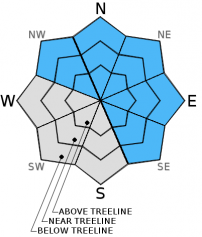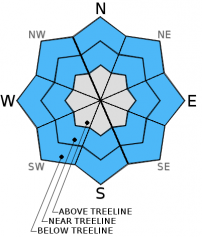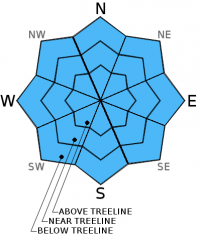| Monday | Monday Night | Tuesday | |
|---|---|---|---|
| Weather: | Cloudy with snow showers in the morning becoming mostly cloudy with a chance of snow showers in the afternoon | Mostly cloudy with a slight chance of snow showers in the evening becoming partly cloudy | Partly cloudy |
| Temperatures: | 31 to 38 deg. F. | 21 to 28 deg. F. | 35 to 42 deg. F. |
| Mid Slope Winds: | Southwest | Southwest | Variable |
| Wind Speed: | 15 to 20 mph with gusts to 30 mph | 10 to 15 mph with gusts to 25 in the evening decreasing overnight | Light |
| Expected snowfall: | 1 to 4 | 0 | 0 |
| Monday | Monday Night | Tuesday | |
|---|---|---|---|
| Weather: | Cloudy with snow showers in the morning becoming mostly cloudy with a chance of snow showers in the afternoon | Mostly cloudy with a slight chance of snow showers in the evening becoming partly cloudy | Partly cloudy |
| Temperatures: | 27 to 34 deg. F. | 18 to 25 deg. F. | 32 to 39 deg. F. |
| Ridge Top Winds: | Southwest | Southwest | Southeast |
| Wind Speed: | 40 to 45 mph with gusts to 70 mph decreasing to 30 to 35 mph with gusts to 55 mph in the afternoon | 35 to 40 mph with gusts to 60 mph decreasing to 10 to 15 mph after midnight | 5 to 10 mph increasing to 10 to 15 mph with gusts to 25 mph in the afternoon |
| Expected snowfall: | 1 to 4 | 0 | 0 |



























